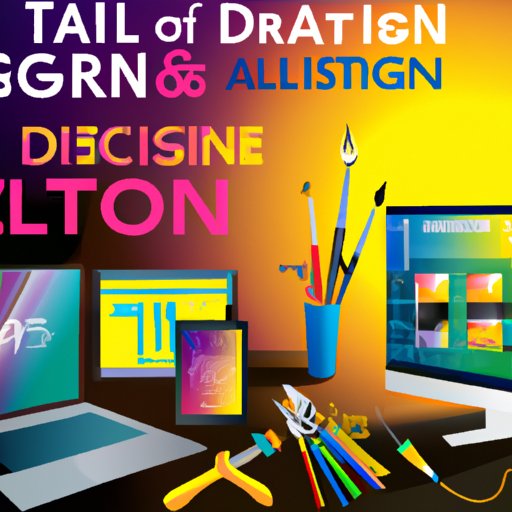Introduction
Digital art is an artistic medium that incorporates the use of technology in its creation. It includes a variety of forms such as 2D and 3D animations, graphic design, illustration, video games, virtual reality, and more. Becoming a digital artist can be an exciting and rewarding career path, as it allows you to explore your creative side while also developing technical skills. In this article, we’ll discuss some of the steps and tips for becoming a digital artist.

Research the Tools and Techniques
The first step in becoming a digital artist is to research the various tools and techniques used in digital art. There are a variety of software programs available to digital artists, including Adobe Photoshop, Illustrator, and InDesign; Autodesk Maya and 3ds Max; Corel Painter; and many more. It’s important to familiarize yourself with these tools and their capabilities so that you can choose the best one for your project. Additionally, there are many techniques used in digital art, such as color theory, composition, lighting, texture, and motion graphics.
When researching tools and techniques, it’s important to explore different options and find what works best for you. You can do this by reading tutorials, watching videos, and experimenting with different software programs. Additionally, talking to other digital artists can help you gain insight into the tools and techniques they use.
Take Classes or Online Courses
Formal education is not necessary to become a digital artist, but it can be beneficial in developing your skills. Taking classes or online courses can help you learn the basics of digital art, such as color theory, composition, and lighting. Additionally, it can provide you with the opportunity to get feedback on your work from experienced instructors and peers, which can help you improve your skills.
When looking for classes or online courses, it’s important to find ones that focus on the specific tools and techniques you’re interested in. Additionally, it’s a good idea to look for courses that offer hands-on projects so that you can practice your skills and apply what you’ve learned.

Create a Digital Art Portfolio
Once you’ve developed your skills, it’s time to create a digital art portfolio. A portfolio is a collection of your best work that showcases your skills and style. It should include a variety of pieces, such as illustrations, animations, and designs. Additionally, it’s important to include pieces that demonstrate your mastery of the tools and techniques you’ve learned.
When creating your portfolio, it’s important to choose pieces that reflect your style and show off your talent. Additionally, it’s a good idea to include a brief description of each piece so that potential clients have a better understanding of your work. Lastly, make sure to keep your portfolio up to date with your most recent work.

Network with Other Digital Artists
Networking with other digital artists can be a great way to learn new techniques, find potential collaborators, and get advice from experienced professionals. Additionally, it can help you build relationships with potential clients and stay up to date on the latest trends in digital art.
When networking with other digital artists, it’s important to be professional and respectful. Additionally, it’s a good idea to attend conferences and events related to digital art, join online forums, and follow other digital artists on social media. These activities can help you connect with other digital artists and build relationships.
Market Your Digital Art
Once you’ve created a portfolio and connected with other digital artists, it’s time to promote your work. There are a variety of ways to market your digital art, such as creating a website, submitting your work to competitions, and using social media. Additionally, it’s important to have a professional presence online, such as having a LinkedIn profile, and to create promotional materials such as business cards and flyers.
When marketing your digital art, it’s important to be consistent and persistent. Additionally, it’s a good idea to reach out to potential clients, participate in online forums, and attend networking events. These activities will help you get your work seen by potential clients and increase your chances of success.
Conclusion
Becoming a digital artist requires researching the tools and techniques used in digital art, taking classes or online courses, creating a portfolio, networking with other artists, and marketing your work. By following these steps and tips, you can become a successful digital artist.
(Note: Is this article not meeting your expectations? Do you have knowledge or insights to share? Unlock new opportunities and expand your reach by joining our authors team. Click Registration to join us and share your expertise with our readers.)
